Ever since I got into roasting coffee quite some years ago, before joining up with Nordic, I was always searching for personal stories on travels to origin. Without too much luck. I’ll try to fill that gap a little by giving you my personal and educational insight into Rwanda and try not to get into detail too much. I was asked if I could keep it a bit short so you would hang in there until the end. I tried my best. I failed. But I have complete trust in you that you’ll make it.
Kigali, Rwanda | end of May
In a very African fashion, right after going out of the airport I get welcomed by a big group of taxi drivers. What was unusual though, there was no screaming.. no trying to get my attention to board one of the many cabs. It was all very civilized and welcoming (unlike some European airports). Which, I found out not too long into my trip, is the general feel you have with all Rwandans. And the most used word right after “Musungo” (foreigner) is most definitely “Welcome”.
Unlike Musungo, which is yelled at you in a friendly manner by the local people and the kids running after your car as long as they humanly can and take every chance to go into a staring contest when standing still, “Welcome” is something they say with the utmost respect and you really do feel welcomed into their beautiful country. And then there’s the cleanliness. The entire country, the capital Kigali no exception, is extremely clean and well maintained. The main language spoken by the people is Kinyarwanda1 and some Kiswahili. Luckily they also speak quite a bit of French, great since I know my way around in French (I really don’t) and more increasingly, English.

The Harvest.
On our first morning we started cupping through two tables of coffees in the RTC lab from washing stations we would go and visit later that afternoon and the following days. Due to an unusual amount of rain in this period, the samples were hard to get. More rain = longer drying time, meaning the coffees were still on the drying tables. They were taken directly from the tables to the lab to be dehulled for our cupping.
Drying time from wet parchment to dry are usually 15 – 21 days. But with this amount of rain it can take up to 30 days or longer. Not only extending the time by a significant amount but also exponentially increasing the risk of developing bad flavours through defects/ferments etc. Costing not only money by increased amount of labour but also on decreased quality of the greens. Good washing station & farm management is key here: working as clean and efficient as possible to minimize risks.
When cupping these very early samples you’ll have to “look through” all this freshness to see the potential and how it’ll develop throughout processing & resting in order to find the gems. However, at first glance cupping the coffees they are performing very well and the season is looking good. Solid coffees all along the range with some excelling.
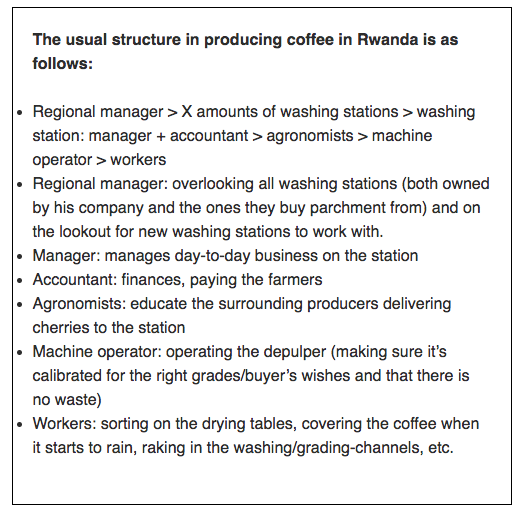 After the early morning cupping in the lab we meet Danny, our driving companion for the coming days and RTCs Western province2 manager overlooking 13 washing stations there with whom we will make our way to the west. We get in one of those good old typical off-road SUVs (we will be needing it..) driving alongside the Njabango3 river towards the West.
After the early morning cupping in the lab we meet Danny, our driving companion for the coming days and RTCs Western province2 manager overlooking 13 washing stations there with whom we will make our way to the west. We get in one of those good old typical off-road SUVs (we will be needing it..) driving alongside the Njabango3 river towards the West.
In general the crops you see on the hills are very diverse and look and feel quite natural. Much more so than for example Ethiopia where it can look quite homogeneous. Another thing that is quite different than Ethiopia is that you can pretty much drive anywhere in one, max two days. It is not as massive that you’ll be taking domestic flights which means we can cover a lot of ground in a relative short time (as long as your buttocks is up for driving in a car on hilly dirt roads for many hours). In general the roads are extremely new and are great to drive on. Making it much faster and safer for the local population to reach other villages as the asphalt road is not only used by cars. As you will notice the road is actually buzzing with people walking & biking. Delivering what seems to be absolutely unimaginable huge amounts of produce and random things like multiple iron pipes (up to 4-5 meters longs…) on a bike. Yes on a bike. Multiple coffee bags being one of them. Cycling them uphill and downhill on steep slopes.
A typical farmer and general info
A 4,5 hour drive and our car getting pushed out of the mud by about 15 local Rwandans later (after first being laughed at for a few minutes for trying) we arrive at the Gitesi washing station where the young owner of the station, Aime, is waiting for us. “Welcome”. Gitesi has its own farm with 15,000 trees and buys from around a ~1,000 typical farmers in the surrounding hills.
- Women pickers coming in to deliver cherries.
- Pickers making efficient use of a rainshower during picking in the field.
- A vegetable growing pilot project at Gitesi.
Aime is a good example of the kind of people we like to work with, and has values and work methods that we care for and try to find in producers, besides being a genuinely solid and friendly guy. He pays all his farmers a 2nd payment depending on what the parchment is sold for and thus giving the farmer a good incentive to increase the quality on the farm. Improving the soil is a good example of increasing quality. Gitesi has a project to distribute pomps and cows to farmers that have potential to threat it well and get the most out the animal.
Cow = organic fertilizer = more yield on trees if done well.
That and milk which the farmer can sell or use for better nutrition that dramatically increases the health of the farmer and his family also enabling him to work better and bring more money to his family. For these projects he also generally targets the very poor farmers that will benefit from it the most. Then there’s a rule which is if the cow happens to be or become pregnant, the calf has to go to the next farmer.
A typical farmer
- has about 170 coffee trees but usually has some other crops in between like banana, maize & beans to earn money outside of the coffee season.
- a coffeetree on a well maintained farm can produce anywhere from 7 (old tree) to 20kg/season. But on average in Rwanda I would say the per tree yield is closer to 2.5kg/season.
- coffee is grown from 1200 – 2100 masl. We buy ours at 1700 and up.
- most commonly used cultivars in Rwanda are Bourbon cultivars. types BM139, Pop330/21, Mibilizi and Jackson but also Catuai, Caturra140, and a few random typica referred to as Harrare.
The season in general is slightly delayed due to the heavy rain and prolonged drying times on the tables. Whereas the western province is near the end of the harvest, the southern province is somewhere in the middle.
- A typical farmer and his wife at home.
- One of the cows given by Gitesi to a farmer.
- Great ripe cherries being picked.
The following days we visited a few other washing stations we buy coffee from like Mahembe where we meet up with Justin for a lunch with a fantastic view of the valleys in the Nyamasheke district. At Mahembe we got another tour in and around the area and checked out their water filtration system.
Besides the three channels going from the de-pulper machine to the different grades (A, B, C) there is also a waste channel leading down the hill. At many washing stations around the world this waste simply ends to a hole in the ground or leads to a nearby river going downstream, the toxic water is simply left to seep into the ground slowly destroying the soil on and around the washing station. Here they try to filter the water as much as possible by leading it through an intricate series of basins, using sand and different stones like lime. The skins of the cherries are composted and distributed to the surrounding farmers. One of the main reasons a lot of the washing station in Rwanda have innovative ways of filtrating this waste is because the government has pushed through a law back in 2014 that waste water has to be separated and filtered before going back into the rivers, and in 2016 they have become strict in regulating it.
- Cherries being pulped.
- Pulped coffee go into floatation channels.
- Graded pulped coffees go into fermentation tanks.
Half way on our Rwanda journey we switched companions and joined up with our friend Sam, the owner of BUF coffee, doing some amazing stuff in Rwanda putting extra focus on experimental projects/processing. One of those projects is Remera where he has built a giant shade shed back in 2016, which we have been buying coffees from the start. They are moved two times a day and are dried in one month compared to the drying beds where they have to be moved every hour and are dried in three weeks. This longer, protected drying time tends to lead to a longer shelf life and more mouthfeel. Sam also runs a cow program to increase the local population’s production. Both in yield and quality.
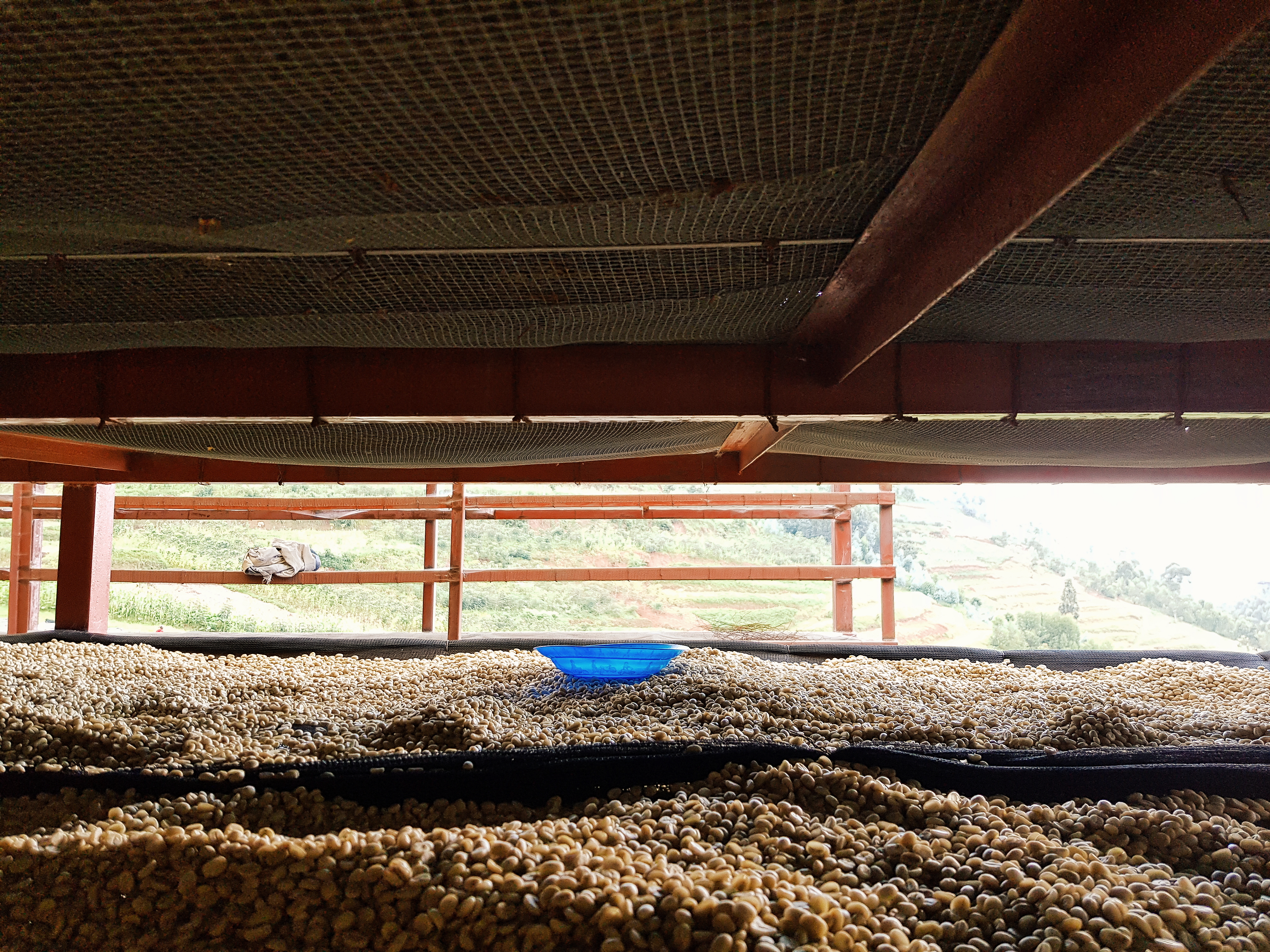
At the end of the journey I was impressed by the beauty of the people with their kindness and hard working mentality and the mesmerizing landscapes. It will still be a long while until these coffees come in but we will be receiving samples from both provinces in the weeks to come and update you more on our buying and arrival dates throughout the season. But if you can’t wait to get your hands on some Rwandans, which I would understand, we have a few lots left that have opened up in profile and are tasting very well.
We usually buy coffees picked from April to July. Season goes on from March up to August depending on the altitude, region & climate. Find out more about how we source in Rwanda.
- Kinyarwanda is one of the official languages in Rwanda (next to French, English and Kiswahili) and a dialect of the Rwanda-Rundi language spoken by 12 million people in Rwanda, Eastern part of Congo and the adjacent parts of southern Uganda and resembles Kirundi, which is spoken in Burundi, so much so that they can easily talk to each other in the same way Norwegian and Swedish people would be able to speak to each other.
- Rwanda’s western province (1 of 5 provinces) consists of Karongi, Ngororero, Nyabihu, Nyamasheke, Rubavu, Rusizi and Rutsiro with it’s regional capital being Kibuye. We buy coffees from the Nyamasheke and Ngororero regions.
- The longest river in Rwanda which becomes the white Nile that later on in North Sudan meets with the blue Nile (originating in the high mountains of Ethiopia) to form the Nile all the way into Egypt. Bringing life along it’s way helping humanity grow in the region.
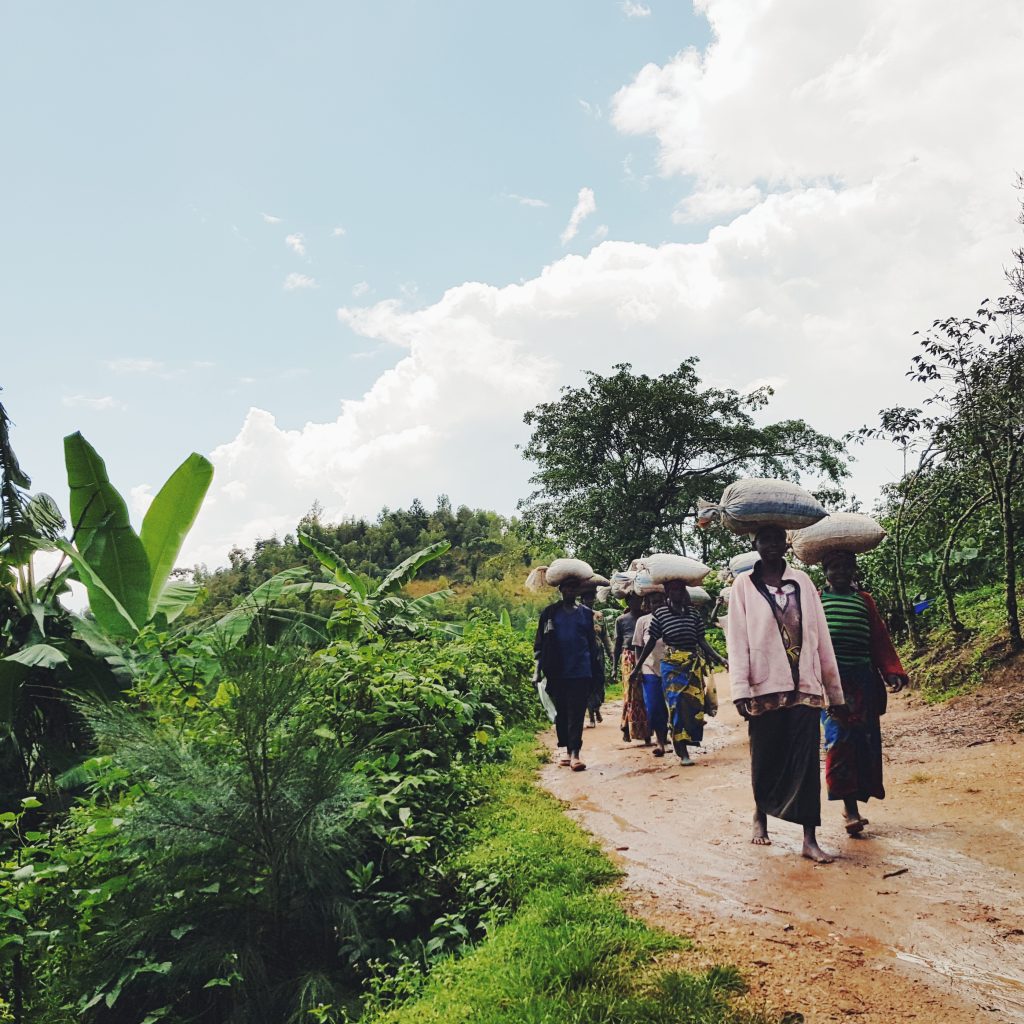
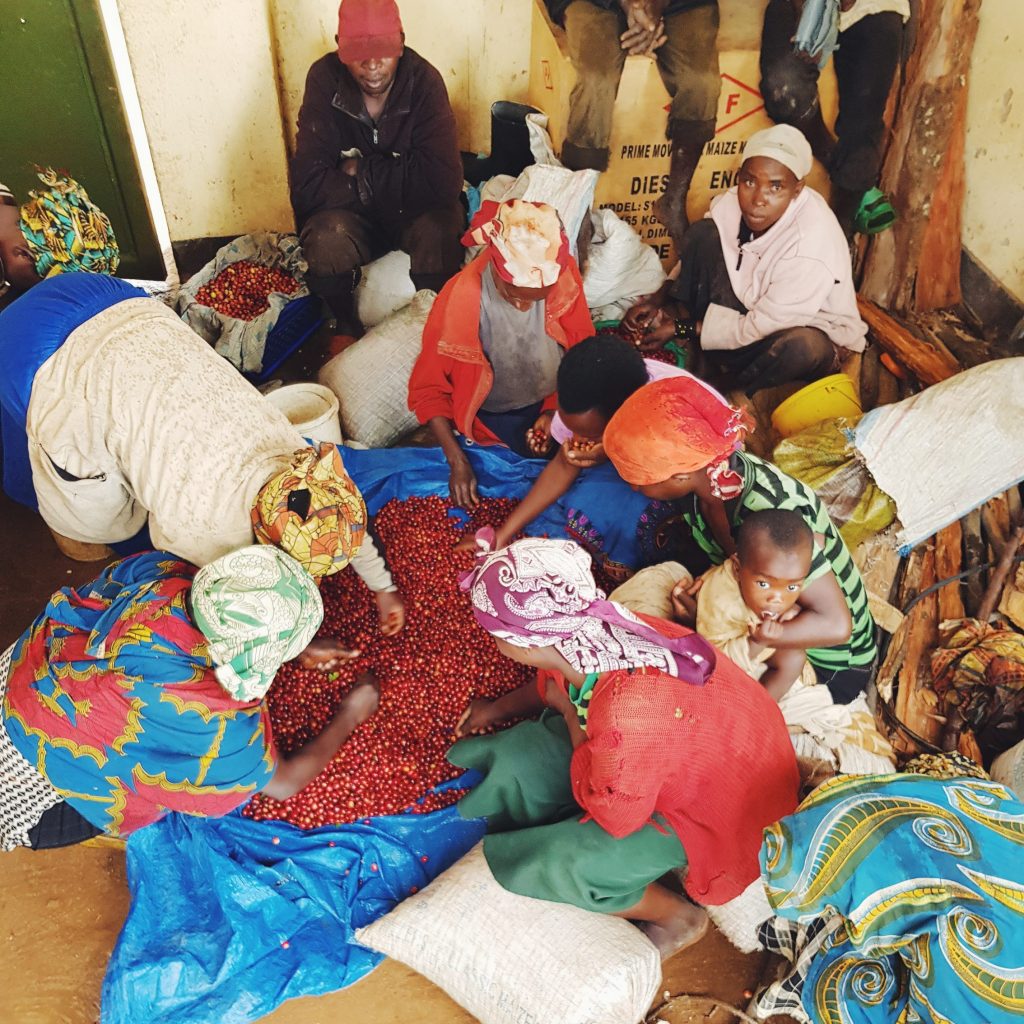
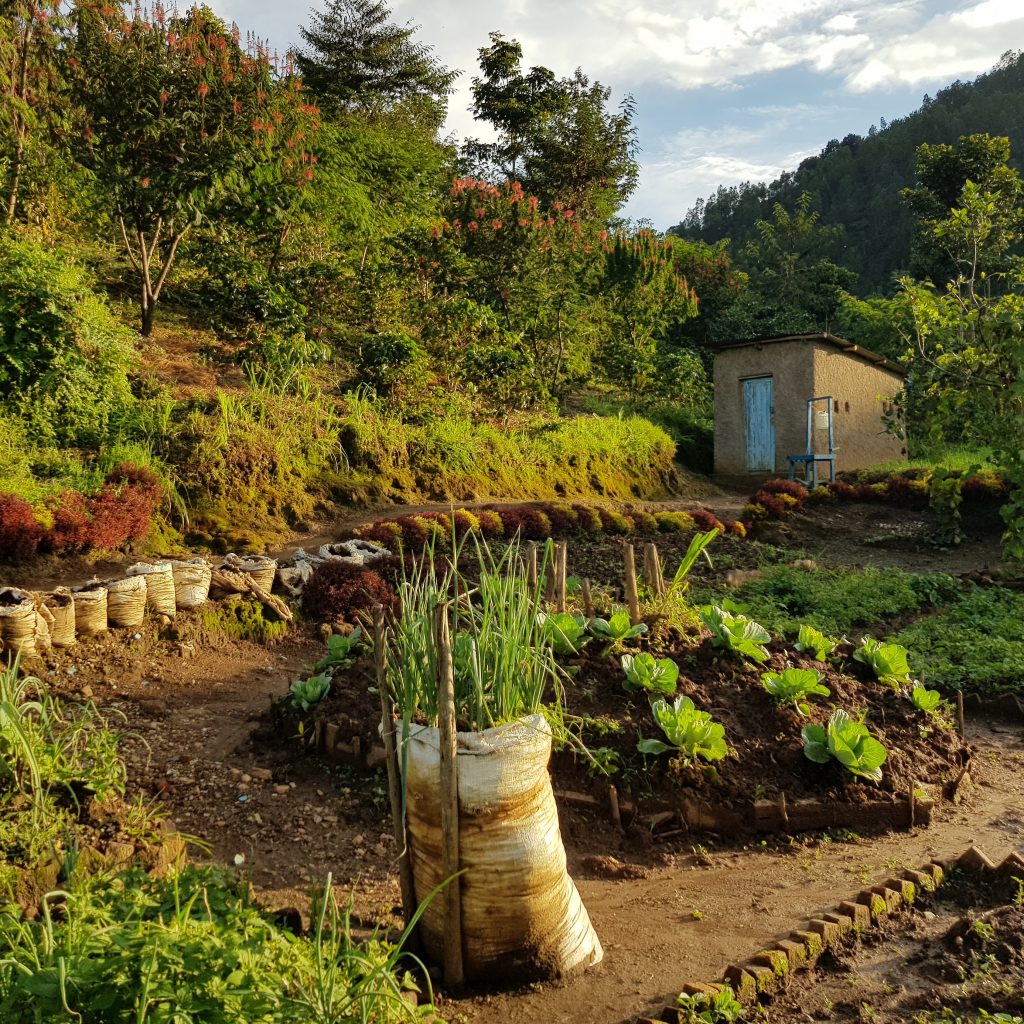

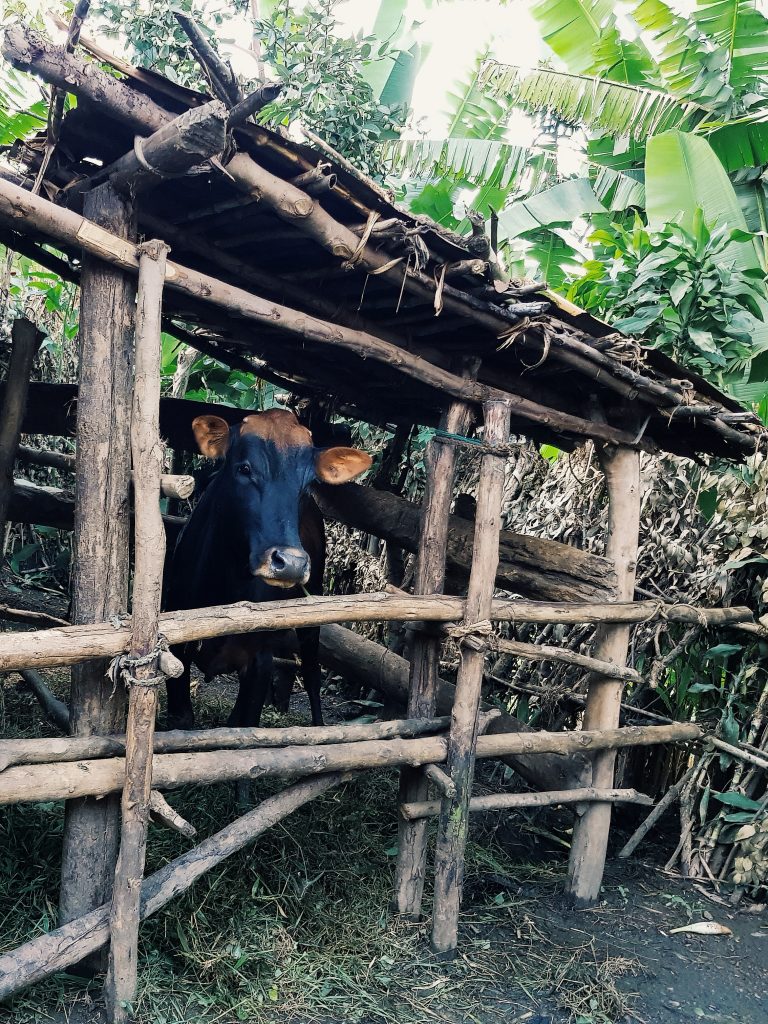
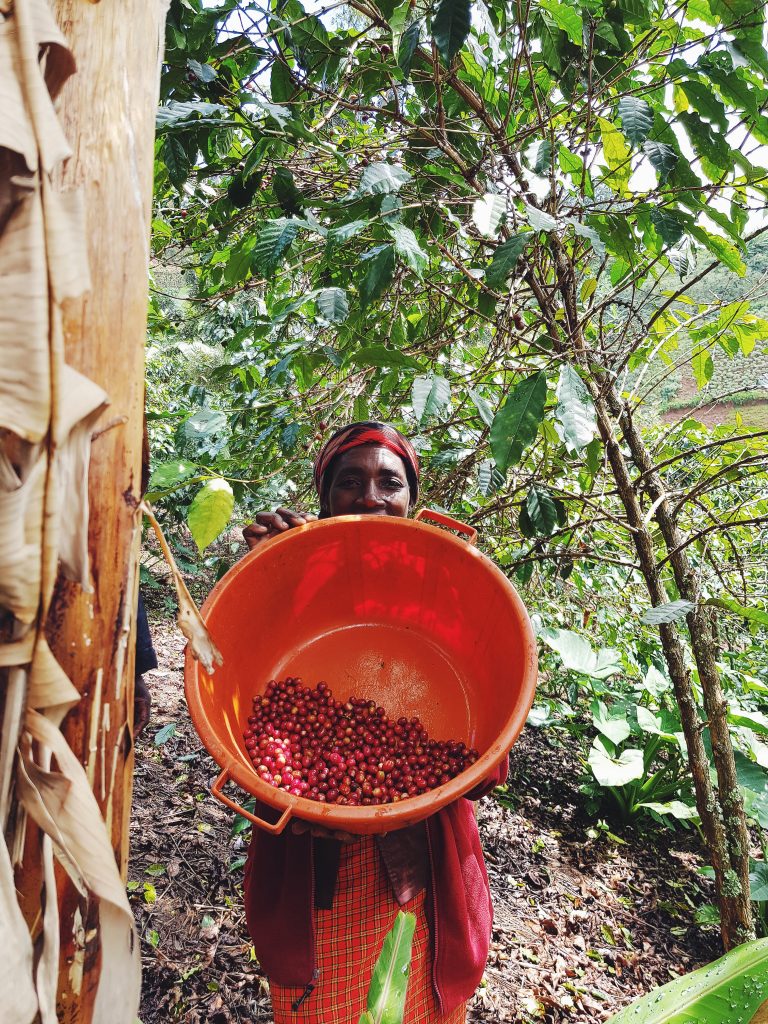
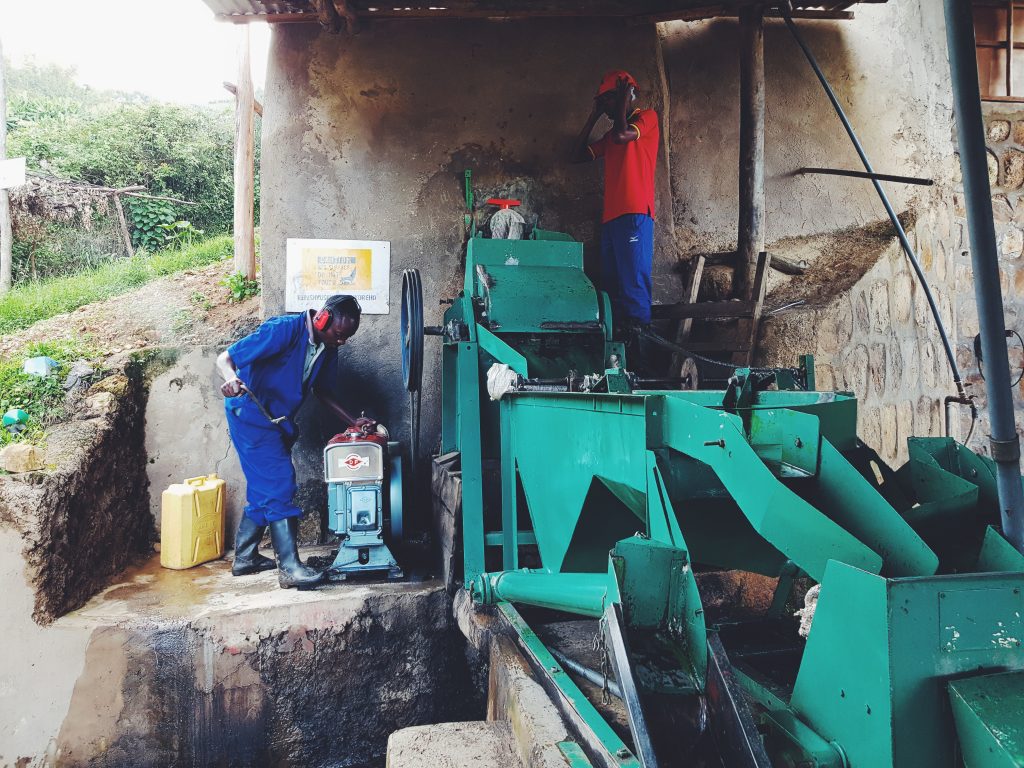
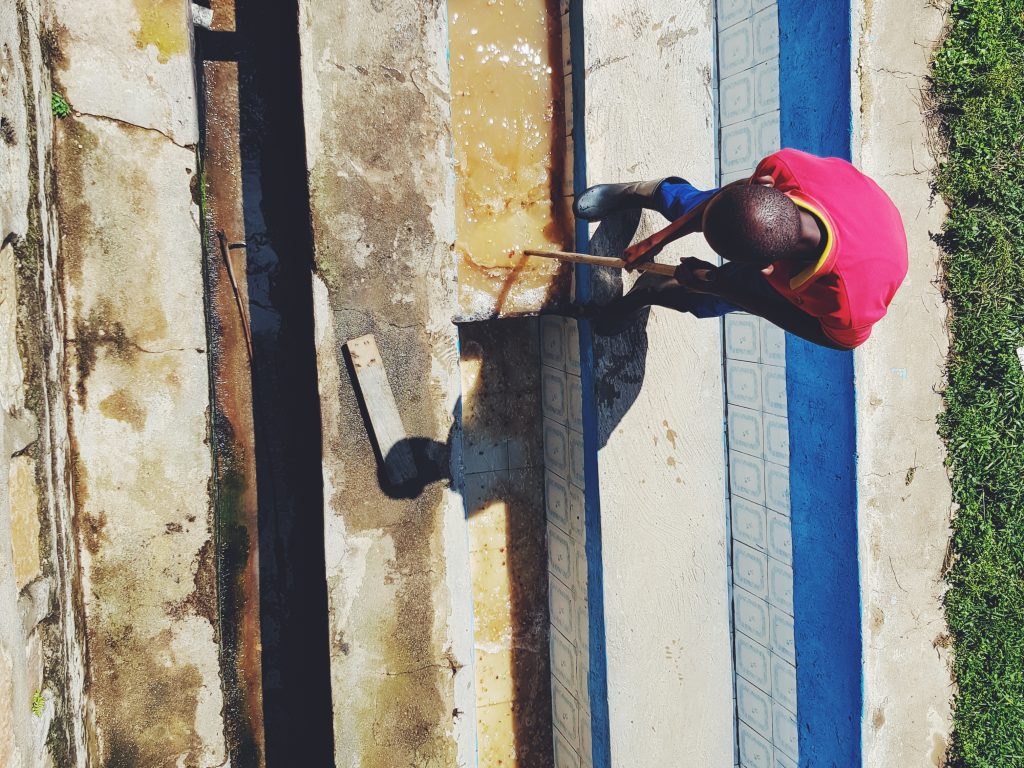
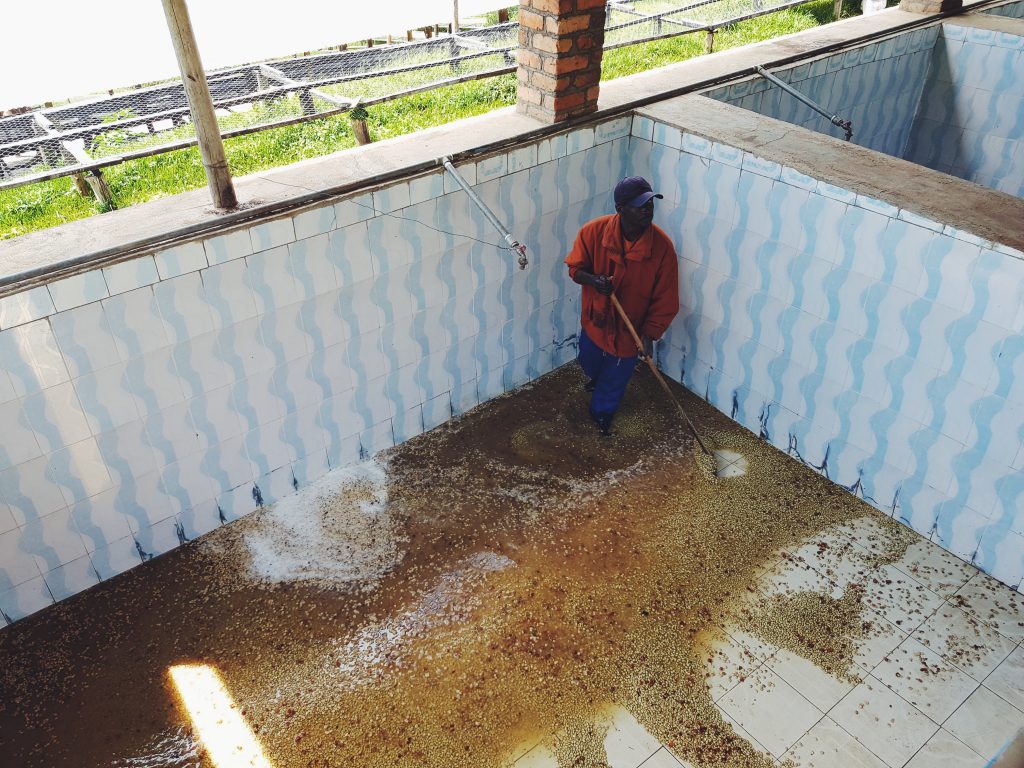
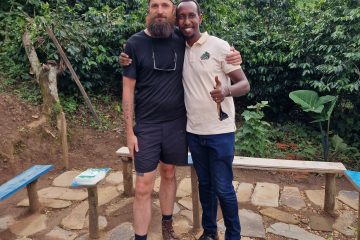
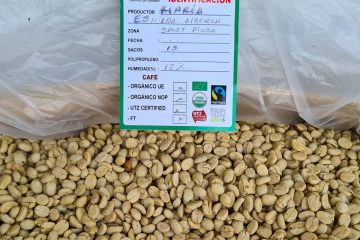
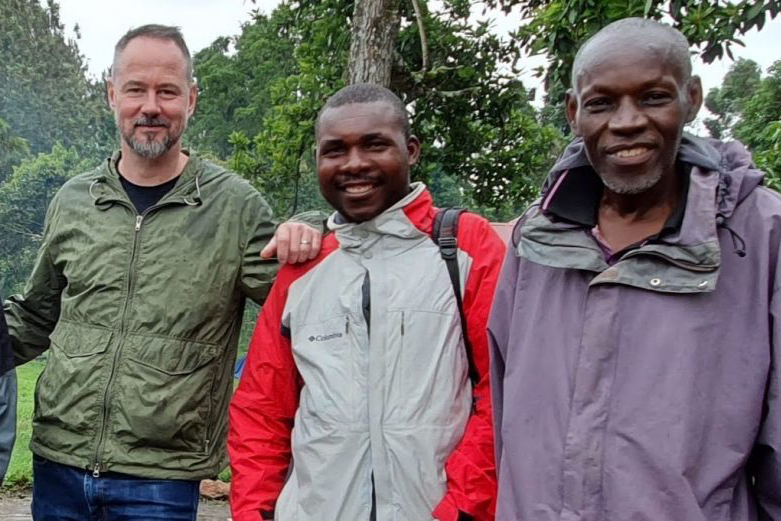
0 Comments